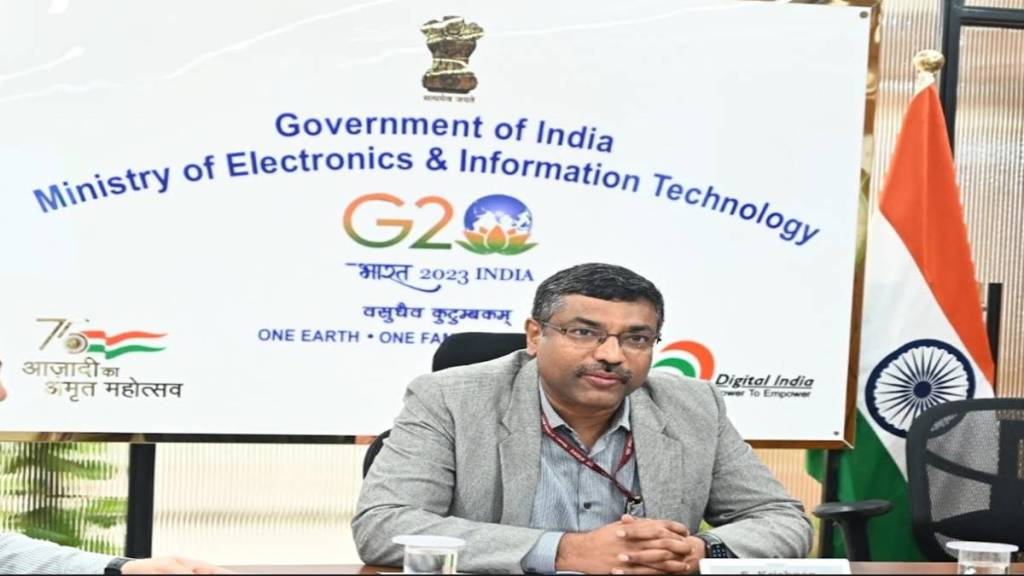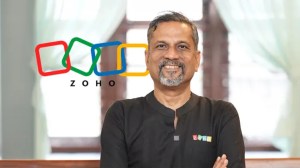With increasing instances of deepfakes and other misinformation, the government is looking at further reducing the timeframe for social media companies to pull down such unlawful content, from the current 36 hours of being flagged. S Krishnan, secretary, ministry of electronics and information technology (MeitY), in an exclusive interview with Jatin Grover, talks about his key priority areas, likely changes in the upcoming amendments to IT Rules, government’s focus on component manufacturing, AI regulations, among others. Excerpts:
Q. After taking the charge, what are your key focus areas?
First and foremost is electronics and semiconductors. The government’s priority is to make sure that we establish a manufacturing ecosystem for both electronics and semiconductors in India and we have major programmes involving fairly heavy outlays to do this. Electronics is likely to be the largest manufacturing sector globally and India must have a piece of this action. The second major area is emerging technologies including artificial intelligence (AI) and blockchain. This offers us the opportunity to actually leap frog in a sense India wrote the IT revolution and came out fairly successful in the IT space, so that’s a lesson to be drawn from that. Third area, which becomes important is the kind of services that we deliver within the government. These technologies need to be applied within the government in different sectors. Another area is cyber security and the cyber laws because all the legislation and the new regulation that needs to come, should fold in cyber security, emerging technologies, services, delivery, and everything.
Q. Amend to IT rules to tackle deepfakes and misinformation is being talked about. What kind of changes are expected?
Fundamentally, misrepresentation is more or less covered. If at all we make any amendments in the rules, it may require something around labelling or watermarking of information. The other is we may have to look at the timeframe for takedowns of misleading content and misinformation. 24 hours and 36 hours may be too long, because the impact of information can be very quick, considering how things go viral. Overall, we have to see, what is it that is not covered right now, and where do we need some degree of clarity.
Q. So, what will be the new timeframe for removing misleading content? You will see when we have the rules.
You will see when we have the rules.
Q. Have the platforms complied with the advisories issued to them on deepfakes, etc?
For social media companies, one thing that I noticed is that when we analyse data from previous years to now, things have changed quite a lot. Earlier it seemed, the government was imposing something, but now the social media companies themselves are much more proactive and dealing with these issues like misrepresentation, fake news, etc. They publish monthly reports in which they do a large number of breakdowns of their own account suo moto, if it violates any of the requirements and their own policies. They have fairly stringent policies, many of which are very similar to what we prohibit. At other times, the minute it’s brought to notice, they take it down voluntarily without even waiting for a formal order. So, the proportion of cases where we issue formal orders is very small compared to the total number of takedowns that they do.
Q. That maybe because the platforms fear losing the legal immunity under safe harbour clause. In the upcoming Digital India Bill, the government is also looking at amending such immunity?
Safe harbour is a different issue and that’s relevant globally. You have to understand that the safe harbour clause, which is there in the present IT Act, is a reflection of what the state of play was in the year 2000. There were not so many internet intermediaries then. There was only one kind of internet intermediary, which is defined there. But that’s not how many intermediaries function now. We really have to categorise intermediaries, figure out to what extent they would be held responsible for the content they carry. So for some, responsibility would be limited but for others it would be significantly more enhanced.
Q. As part of India dataset platform under IndiaAI, is there any plan on how we are going to monetise the non-personal data?
Right now we are not looking at monetising necessarily. That is not the government’s goal but we have to see how the data can be used to produce better outcomes, solve major issues for the country and go forward.
Q. The government last year introduced an import management system for laptops. Any clarity on how we are looking at the authorisation regime?
Right now, the main aspect that we are looking at is we want to see sources of supplies, study where it is coming from, and what are the kind of safety and security measures that we have to think of in the future. I think it’s more on that basis. So we’ll await where the data comes in and then take a view on what we need to do.
Q. With regard to value addition, you have been talking about a 30-40% number. Where are we focusing?
This is a global value chain. The focus is on a few sectors where we can be competitive so that you have sufficient value addition to be an important player in that value chain. And so that is what we should be aiming for. We should not be aiming for making the whole thing from scratch here as that might make the product too expensive. So, if we get about 30-40% of the value chain, then it means that we are an important player in the value chain. But if you are trying to aim for 100%, it doesn’t make sense as the costs are too much and we can’t be competitive on that.
Q. Any target you are looking at for component manufacturing?
The entire digital economy size, we are trying to grow into a trillion dollars in a few years time. Of which, the electronics component should be about $300 billion or so. So that’s a fairly ambitious target.
Q. On one hand we are talking about higher value addition and also reduction in custom duties. How do we tend to balance?
We are only rationalising custom duty. There were a number of issues with regard to classification and we had multiplicity of rates. Now, we have two clear rates, most of which come in at 10% and so, 10% is adequate protection for anybody who wants to manufacture. Rationalising the number of rates is very important from perspective of classification, and avoiding classification disputes.
Q. How are you looking at AI regulations especially when big tech are saying that regulation should be on the use cases, and not the technology at the core itself?
What is important is that we have to balance the things. We have to look at what are the gains to the economy, that something that AI can offer in terms of innovation, in terms of use cases, which will sort of substantially enhance productivity and thereby make sure that the economy does significantly better. So there is a significant opportunity to improve economic growth and productivity through use of such technology. So, we have to ensure that we harness that while on the other hand ensure that the harms that it can cause are prevented. So we will have to take a very considered view on how we regulate. We don’t want to kill the innovation.








